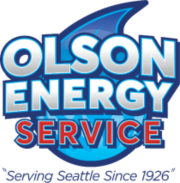-
Stopping Heat Loss in Your Home
If you’re like most Seattle homeowners, you want to prevent heat loss in your home—not only because it will make your home chilly, but also because you’ll end up spending more money to keep your household comfortable. Even when you turn up the thermostat, however, your home heating system may not be keeping you warm. Have you noticed that some parts of your home stay colder than others? As this video explains, the most likely culprit is inadequate insulation and poorly sealed windows and doors. When cold air seeps in from the outside, you can run the furnace for hours without being able to effectively warm some of the rooms in your house. To learn more about how to stop heat from escaping your home, watch the full clip.
-
An Inside Look at Geothermal Heat Pumps
As the world continues shifting toward more sustainable and efficient energy sources, heating and cooling options have expanded to include geothermal heating and cooling. This technology harnesses the earth’s heat energy to keep homes and businesses comfortable all year round. Explore the ins and outs of geothermal heating, the mechanisms behind geothermal heat pumps, their benefits, and other considerations.
What is Geothermal Heating?
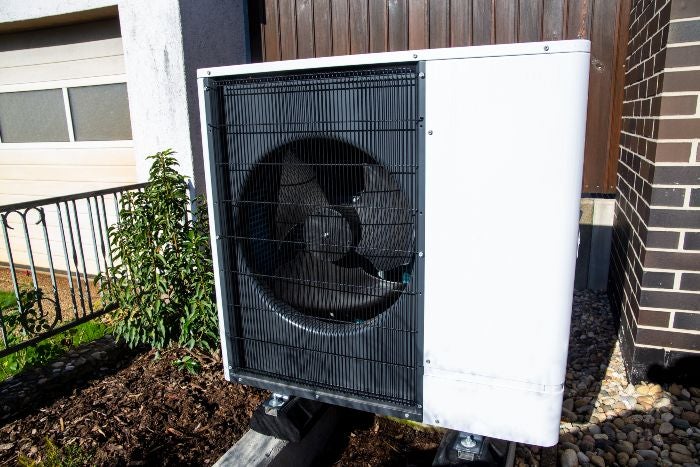
Geothermal heating is an energy-efficient climate control method that taps into the constant thermal energy stored beneath the earth’s surface. This form of heating is seen as a green alternative to traditional methods because it substantially reduces the reliance on fossil fuels and decreases greenhouse gas emissions.
While the ground near the surface fluctuates almost as much as the air temperature, the soil below the frost line maintains a steady temperature of 45 to 75 degrees. This heat source remains consistent despite seasonal changes, making it a reliable option for both heating and cooling.How Do Geothermal Heat Pumps Work?
Are you familiar with air-source heat pumps? These AC-like systems move heat between the indoor and outdoor air for high-efficiency heating and cooling. Geothermal or ground-source heat pumps are similar, but they exchange heat between the earth and the buildings they serve.
A series of underground pipes, known as a ground loop, comprises the heart of geothermal heating and cooling. Ground loop systems come in two forms: open loop and closed loop. Open loop systems utilize well water, a pond, or a lake for direct heat exchange. In this case, the ground loop is filled with water.
Closed loop systems absorb or disperse heat directly to the earth, offering versatility and environmental safety but requiring a larger installation area. In this case, the ground loop contains a mixture of water and antifreeze as the heat-transfer fluid.
In heating mode, the fluid circulating through the pipes absorbs heat from the ground and carries it to the heat pump unit. There, the heat is concentrated and transferred to the air circulating through the building’s ductwork, thus heating the interior.
During the cooling process, the heat pump absorbs heat from the indoor air and transfers it into the ground via the loop system, thereby cooling the building. Transitioning between heating and cooling modes is seamless and can be controlled at the thermostat.
Pros and Cons of Geothermal Heat Pumps
Like all heating and cooling systems, geothermal heat pumps have benefits and challenges. Here’s a breakdown of each:
Pros
- Energy efficiency: Geothermal heat pumps are incredibly efficient. They can deliver three to five units of heat for every unit of electricity they use, making them 300 to 500 percent efficient. This incredible performance is possible because the heat pump transfers heat rather than creating it, a critical difference from conventional heating systems.
- Cost savings: Higher efficiency amounts to significant utility savings over the long term, making geothermal heat pumps a cost-effective investment.
- Environmental benefits: By leveraging renewable energy from the earth, these systems reduce dependence on fossil fuels and produce fewer greenhouse gas emissions.
- Durability and reliability: Geothermal systems have few moving parts, leading to a longer lifespan and lower maintenance needs than conventional systems. The indoor components typically last about 25 years, and the ground loop can last over 50 years.
Cons
- High initial investment: Geothermal heat pumps cost significantly more than traditional HVAC systems, largely due to the ground loop portion. However, federal, state, and local incentives help offset the upfront cost.
- Site-specific considerations: Installation is challenging, sometimes impossible, on smaller properties or areas with difficult ground conditions. A thorough site evaluation is essential before installation.
- Electricity use: While efficient, geothermal systems still run on electricity, so they aren’t carbon neutral unless powered by renewably sourced electricity.
- Professional installation and maintenance required: Due to their complexity, geothermal systems must be professionally installed and maintained. And since geothermal heat pumps are less common, finding a qualified installer may be difficult.
Trust Olson Energy Service for Your Geothermal Needs
With nearly a century of service in the Seattle area, Olson Energy Service takes pride in delivering energy-efficient heating and cooling solutions to our customers. Our mission has always been centered on serving the community with integrity and expertise. We’ll work hard to provide a system that meets your unique needs, enhances comfort, and contributes to a healthier planet. If you’re considering the switch to a geothermal heat pump or need other HVAC services in Seattle, WA, please contact us online or call us at 206.782.5522 to speak with a friendly representative today.
-
Is It Really Necessary to Get a Pre-Winter Furnace Tune-Up?
One of the most important steps you can take to keep your HVAC system running smoothly is to have your furnace checked before the weather starts to get cold. A pre-winter furnace tune-up can help to ensure that your Seattle home stays warm and comfortable even when the temperature outside plummets. You may be wondering, though, whether this yearly investment is strictly necessary. Here are some of the advantages of having a pre-winter maintenance check for your home heating system:
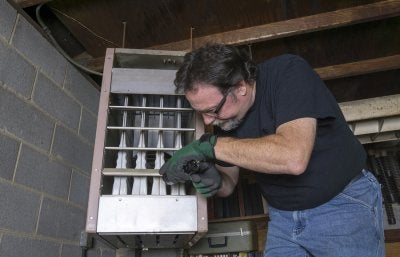
You’ll need fewer repairs.
Getting a tune-up greatly reduces the chances that you’ll need to call for emergency repair for your furnace during the long winter months. Maintenance means that you’ll be able to identify and fix small issues before they have a chance to develop into larger problems. Nobody wants to end up paying for a repair that could have been avoided with a simple tune-up, so schedule the tune-up and you can avoid this issue.
You’ll avoid potential hazards.
A furnace with a problem won’t just make your home uncomfortable—it can also be dangerous. If there is a gas leak, it could put everybody in your household in jeopardy. Having your heating system checked over by a professional before the season of heavy use will help to ensure that you can use it safely.
You’ll extend the life of your furnace.
The more frequently you have your furnace checked for small problems, the less likely it is that these problems will add up to a breakdown. Annual system tune-ups help to extend the life of your furnace, sparing you the expense of a replacement.
You’ll keep your heating costs down.
The less efficiently your furnace is working, the more energy you’ll have to expend in order to keep your house warm. Investing in yearly maintenance will help to keep every component of your furnace working at top capacity, allowing you to stay comfortable without breaking your budget.
-
Is a Fireplace Insert Right for You?
Many homeowners love the thought of warming themselves before a cozy fireplace on a cold winter’s evening. Unfortunately, fireplaces are extremely wasteful of energy. When you use your furnace to warm up the rooms in your house that don’t have a fireplace, you may discover that much of that warm air goes right up the chimney. In addition, the pollutant-heavy wood smoke emitted by older fireplaces isn’t good for the environment.
If you want to enjoy the benefits of a fireplace without the drawbacks, you might consider a fireplace insert . Watch this video from The New York Times to hear the story of one couple who decided to opt for a fireplace insert for their house. If you’re trying to decide whether to have a fireplace insert installed in your Seattle home, the video may help you make your decision.
-
How We Can Help in an Electrical Emergency?
You never can tell when an electrical emergency will happen, which is why it’s important to be ready for a crisis. Olson Energy Service offers emergency electrical service to homeowners in the Seattle area, troubleshooting everything from HVAC control malfunctions to your indoor wiring. If your service panel is hot to the touch, you notice a burning odor coming from any of your electrical outlets or appliances, or you’re experiencing unexplained power outages, it’s a sign that you need to contact an electrical professional as soon as possible. Our team of skilled technicians offers a wide array of emergency services, including expedited electrical repairs, replacement of smoke and carbon monoxide detectors, and safety inspections. To ensure that you’re never at a loss when it comes to electrical emergencies, we offer our services 24 hours a day, seven days a week. If you have any questions for our team, contact us today.
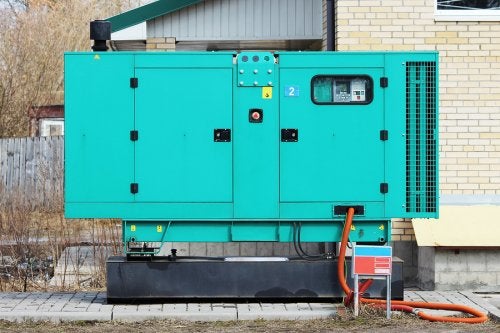
-
When to Consider a Tankless Water Heater?
If your home is in need of a new water heating system, you may want to consider shopping for a tankless water heater. Unlike a conventional water heater, which uses energy to store hot water throughout the day and night, a tankless water heater only turns on when it senses a demand for hot water. With services from a company that offers water heater replacement in Seattle, you will be able to install a new tankless water heater that will provide you with terrific performance for many years to come. Let’s take a look at when to consider a tankless water heater for your home.
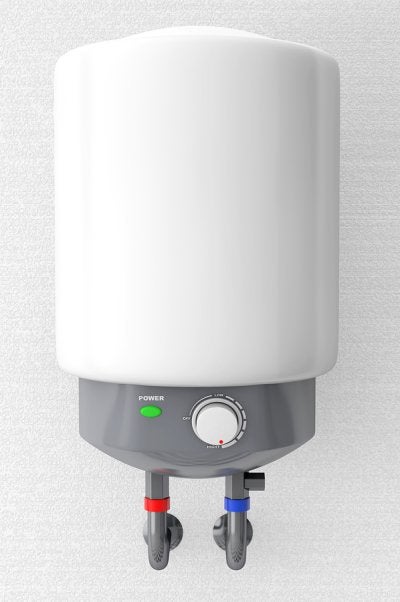
Your Current Water Heater Operates Inefficiently
When you start to notice that your conventional water heater is no longer providing you with good efficiency, it may be time to consider a tankless installation. Some of the signs of an inefficient water heater include higher hot water bills or a system that frequently runs out of hot water. With a tankless unit, you will enjoy much better efficiency from your water heating system.
You Want to Save Space in Your Home
Apartment dwellers and families that live in smaller houses are always looking for ways to free up extra space. You may have noticed that the bulky tank of your conventional water heater takes up a lot of space in your home. If you want to save space and free up additional room for storage, it may be time to go tankless.
You Want to Make a Long Lasting Investment
Purchasing a new water heater can be a major expense for any household. If you want to make sure that your new water heater is a great investment in the long run, you may want to consider your tankless options. Tankless water heaters have an average lifespan of up to twenty years, which is twice as long as the ten year lifespan of a conventional unit. After your tankless water heater has been installed, you can rest assured that it will remain operational for decades in the future.
““
-
Questions and Answers on Fireplace Insert Installation
Whether you use a heat pump, furnace, or other type of heater in Seattle to keep your home warm during the winter, you’ll want it to be as efficient and environmentally safe as possible. Your furnace and air conditioner specialist can fit you with a fireplace insert installation that brings your existing fireplace back to life as a viable heating source. This comes with a few important benefits for your household and can also be a great aesthetic addition to your design, but you’ll need the professionals to help you install it. Keep reading for the answers to some of your questions about fireplace insert installation.
What is a fireplace insert installation?

Like a heat pump or furnace, a fireplace insert installation can help you keep your home warm without hurting the environment or costing too much money. An existing fireplace may be an excellent focal point for your living room, but if you use it frequently you should ensure that you’re being responsible with it. A fireplace insert installation can help you make the most of your existing masonry by protecting the environment, your family, and your bank account.
How will it help my house?
One of the problems with a typical fireplace is that it is subject to a substantial amount of standby heat loss. This makes lighting a fire an inherently aesthetic operation, as the majority of the heat will flow out of the house through the chimney. If you want to give the furnace a break and heat your home with your fireplace, a fireplace insert can be a valuable commodity. Your fireplace insert will limit heat loss so you can keep the heat in your home, making for a much more efficient heating system.
Does it look nice?
Adding a fireplace insert installation to your home will by no means take away from the aesthetic value of your fireplace. There are different types of fireplace inserts to choose from, and some homeowners even use inserts to update their fireplace design. Don’t feel like you have to choose between efficiency and cosmetic appeal, because fireplace inserts can offer both.
-
Exploring Popular Types of Fireplace Inserts
Is your fireplace sitting unused because the idea of dealing with the hassle of buying firewood, starting a fire, and cleaning up is just too overwhelming? Fortunately, you can get the best of both worlds with fireplace inserts. Fireplace inserts let you enjoy the cozy charm of your fireplace and maybe even run your furnace less. Give your heat pump a break and cut your heating bills by enjoying your fireplace with one of these fireplace insert options in Seattle .
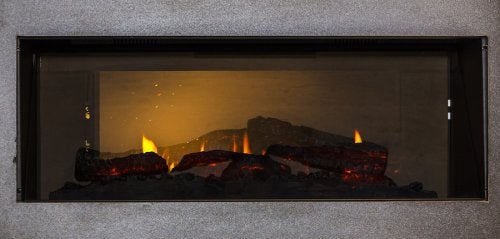
Gas Inserts
Gas fireplace inserts help you retain the charm of your fireplace without the mess. To have a gas fireplace insert, you will need natural gas or propane in your yard that is attached to the fireplace insert. Specially designed ceramic logs sit inside the fire chamber to mimic the appearance of natural logs, and gas-powered flames rise up between the logs, creating a realistic-looking fire. The strength of the fire can be controlled with a remote control, and it can be turned on and off with a light switch. This allows you to easily control how much heating it provides and to adjust it as needed. There are both direct-vent and vent-free options. Direct-vent gas fireplaces use your chimney for venting, while vent-free units are self-contained. Your heating and cooling expert can help you select the right one for you.
Electric Inserts
Electric fireplace inserts are essentially heaters that also have the appearance of flames. They are even available with wood crackling sound effects for a more authentic experience. They don’t require a chimney or any venting, so they are ideal if your chimney isn’t operational or if you don’t want to deal with chimney maintenance. As with gas fireplace insets, they can be controlled by remotes so that you can easily adjust the heat given off. Many people find electric inserts work especially well in fireplaces that are in smaller rooms, such as bedrooms or offices, that can get chilly but may not need the stronger heating power of a gas-powered system.
-
The Importance of Preventative HVAC Maintenance
The holiday season is just around the corner, and now is a fantastic time to schedule preventative maintenance for your HVAC system near Seattle. Rather than waiting for your heat pump to fail and leave you in the cold, you can prevent a furnace or heating emergency by scheduling a service appointment before the peak heating season arrives. Along with cleaning and servicing your heat pump or furnace, your technician will also be able to check for any indications that your system may be on the brink of failure. Read on for an overview of the importance of scheduling preventative HVAC maintenance.
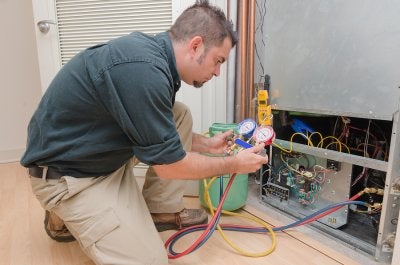
Improve System Efficiency
While preventative HVAC maintenance can help you catch repair problems, this service can also boost the efficiency of a system that is already in proper working order. When your technician comes to perform a preventative service before the start of winter, he will take the time to change your air filters and lubricate its moving parts. With these simple services, you can help to improve your HVAC’s efficiency dramatically.
Prevent System Failure
When your HVAC system suddenly stops working in the dead of winter, you may have a heating repair emergency on your hands. With preventative maintenance for your HVAC system, you can rest assured that your system has been safeguarded from failure. During your preventative maintenance appointment, your technician will take the time to check out your furnace or heat pump for any signs that a maintenance emergency may be imminent.
Boost Indoor Air Quality
Indoor air quality is an important concern for any homeowner. If you or your loved ones experience allergies or other respiratory issues when you are indoors during the winter, you may want to set up a preventative HVAC repair service. When your technician replaced your air filter, he will be able to make sure that your system is blowing clean, clear air throughout your home. After learning about these great benefits, be sure to set up your preventative service before the winter season gets underway.
““
-
Signs a Heat Pump Is Right for Your Home
When you start thinking about heating and cooling appliances for your home, make sure you don’t overlook the benefits that a heat pump near Seattle can offer. Keep in mind, however, that not every home is a suitable candidate for a heat pump. If yours qualifies, this option can help you save energy and money as well as handle both heating and cooling. Keep reading to learn about a few signs that a heat pump is right for your home.
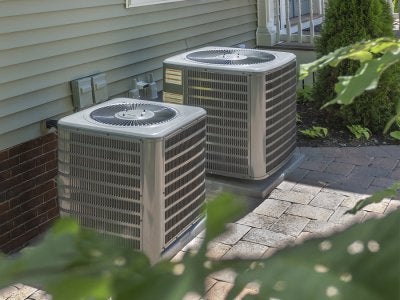
You live in the right environment.
The purpose of a heat pump is to transfer heat from one location to another; however, you will need a source of heat in order to move it elsewhere. Although this type of heating and cooling unit does rely on electricity to some extent, it primarily uses the surrounding environment. If you have extensive heating or cooling needs that the outdoor environment cannot help satisfy, you might want to choose another system. If your needs are on the moderate side and you live in the right area, however, a heat pump can be a great way to save energy.
You want to save energy.
Most heating and cooling appliances will generate heat or cool generated air. For this reason, HVAC appliances often account for a substantial amount of the energy that your household consumes. Heat pumps are unlike these alternatives because they only do a very small amount of heating; the rest of the process involves moving the air around instead. This can cut your energy bills down by a wide margin, which allows you to use your funds for other pressing purposes. A heat pump is also an environmentally-friendly choice in this way, making it great for those who are trying to go green.
You’re looking for versatile equipment.
If you are looking for a piece of equipment that can heat and cool your home rather than one or the other, a heat pump may be right for you. You can use this appliance all year long to efficiently and effectively keep your indoor air at a comfortable temperature for your family.
RECENT POSTS
categories
- Uncategorized
- Air Conditioner
- Fireplace Inserts
- Fireplace Insert Installation
- Air Conditioning Installations
- Air Conditioning Units
- Air Conditioner Maintenance
- HVAC Professionals
- Heat Pump Installation
- Heating and Cooling
- HVAC Unit
- Heat Pumps
- Furnace
- Furnace Service
- Tankless Water Heaters
- Water Heaters
- Energy Efficiency
- HVAC Contractors
- Olson Energy Service
- Mini-Split Systems
- Ductless Air Conditioner
- Residential Services
- Seasonal Boiler Maintenance
- HVAC Maintainance
